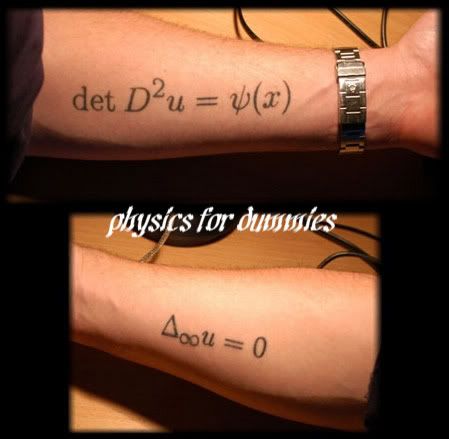Can-Crushing Experiment
A current U.S. 12 oz soft drink can measures about 6.6 cm(2.6 inches) in diameter and 12.1 cm (4.75 inches) tall. The area of a cylinder of these dimensions is about 316 square cm (49 square inches), including the ends. The force of one athmosphere of pressure on that area is about 3200 newtons (720 lbs). Nevertheless, such cans can be made of very thin aluminum because the same force acts outward from the inside of the can.
If a few cubic centimeters of water is poured into such a can (just enough to cover the bottom) and the can is held above a laboratory burner for about 30 seconds, the water can be brought to the boiling point where its vapor pressure is equal to atmospheric pressure. The vapor will then push most of the air out of the can. If the can is quickly inverted into a beaker of water, sealing off the opening, the sudden drop in vapor pressure will result in enough net inward pressure to quickly crush the can.
Crushing of Steel Drum
Dan Stamm, a physics teacher at Campbell High School in Smyrna, GA constructed a platform for heating water in a steel drum. The drums used had a surface area of about 3000 square inches. The force of one atmosphere of pressure on that area is about 44,000 lbs or 22 tons! Nevertheless, such cans can be made of reasonably thin steel because the same force normally acts outward from the inside of the vessel. The procedure involved pouring about a gallon of water into the drum (just enough to cover the bottom) and and heating it over a propane burner for 15 to 30 minutes. The water is brought to the boiling pointwhere its vapor pressure is equal to atmospheric pressure. The vapor will then push most of the air out of the can. The can is then sealed as the heat is removed. If the drum is cooled quickly, the sudden drop in vapor pressure will result in enough net inward pressure to crush the can.
Savery Engine
This model of the 17th century Savery engine was built by physics teacher Dan Stamm of Campbell High School, Smyrna, GA.
Invented by Thomas Savery in the late 17th century, the Savery engine was the first commercially successful steam engine. It was used to pump water out of mines.
In this model, water is boiled in the metal tank to drive out air, and then when the tank is cooled, it pumps water from the large jug.
Magdeburg Hemispheres
Shown is a small demonstration replica of the original Magdeburg hemisphere. Its diameter is 14 cm (area = 154 sq cm) so that the force of the atmosphere on its cross-sectional area is 1560 Newtons. If a small vacuum pump can remove half of the air, then the force required to pull the hemispheres apart would be about 780 Newtons or 175 pounds.
A current U.S. 12 oz soft drink can measures about 6.6 cm(2.6 inches) in diameter and 12.1 cm (4.75 inches) tall. The area of a cylinder of these dimensions is about 316 square cm (49 square inches), including the ends. The force of one athmosphere of pressure on that area is about 3200 newtons (720 lbs). Nevertheless, such cans can be made of very thin aluminum because the same force acts outward from the inside of the can.
If a few cubic centimeters of water is poured into such a can (just enough to cover the bottom) and the can is held above a laboratory burner for about 30 seconds, the water can be brought to the boiling point where its vapor pressure is equal to atmospheric pressure. The vapor will then push most of the air out of the can. If the can is quickly inverted into a beaker of water, sealing off the opening, the sudden drop in vapor pressure will result in enough net inward pressure to quickly crush the can.
Crushing of Steel Drum
Dan Stamm, a physics teacher at Campbell High School in Smyrna, GA constructed a platform for heating water in a steel drum. The drums used had a surface area of about 3000 square inches. The force of one atmosphere of pressure on that area is about 44,000 lbs or 22 tons! Nevertheless, such cans can be made of reasonably thin steel because the same force normally acts outward from the inside of the vessel. The procedure involved pouring about a gallon of water into the drum (just enough to cover the bottom) and and heating it over a propane burner for 15 to 30 minutes. The water is brought to the boiling pointwhere its vapor pressure is equal to atmospheric pressure. The vapor will then push most of the air out of the can. The can is then sealed as the heat is removed. If the drum is cooled quickly, the sudden drop in vapor pressure will result in enough net inward pressure to crush the can.
Savery Engine
This model of the 17th century Savery engine was built by physics teacher Dan Stamm of Campbell High School, Smyrna, GA.
Invented by Thomas Savery in the late 17th century, the Savery engine was the first commercially successful steam engine. It was used to pump water out of mines.
In this model, water is boiled in the metal tank to drive out air, and then when the tank is cooled, it pumps water from the large jug.
Magdeburg Hemispheres
Shown is a small demonstration replica of the original Magdeburg hemisphere. Its diameter is 14 cm (area = 154 sq cm) so that the force of the atmosphere on its cross-sectional area is 1560 Newtons. If a small vacuum pump can remove half of the air, then the force required to pull the hemispheres apart would be about 780 Newtons or 175 pounds.

No comments:
Post a Comment